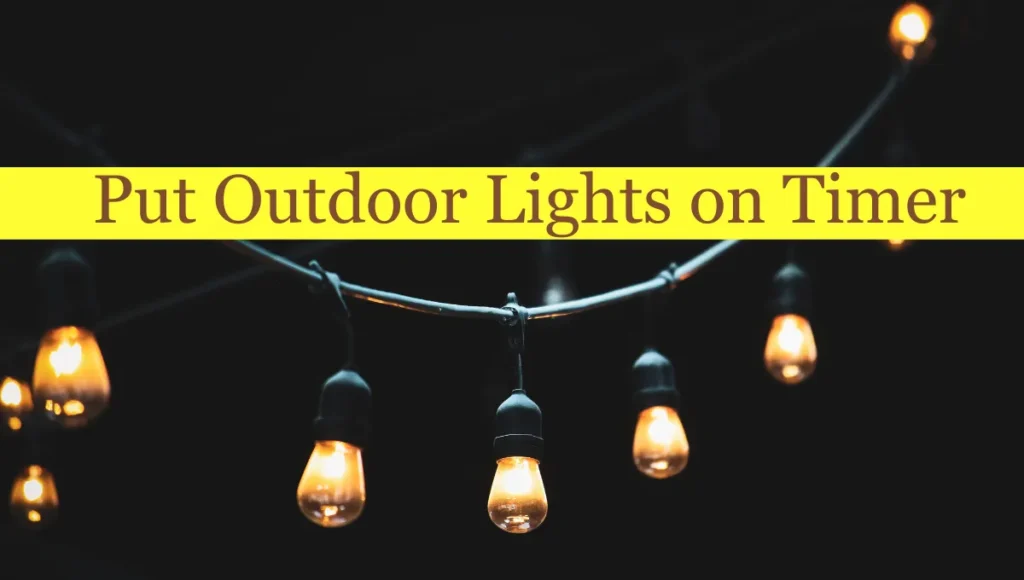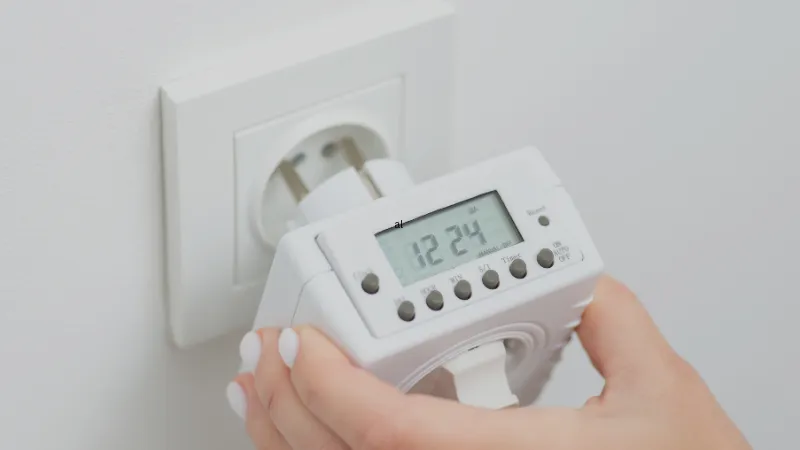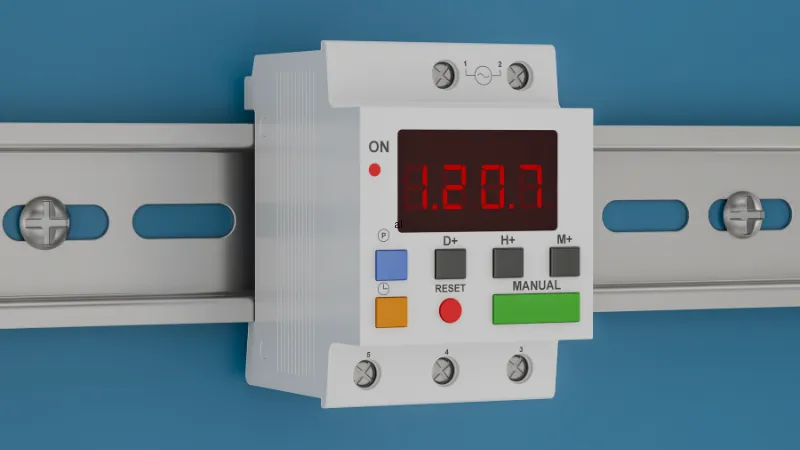Are you also thinking of installing outdoor lights to make the exterior look of your home even more beautiful? If you want your friends and neighbours to say wow after seeing the exterior of your home, then outdoor lights do this work for you.
But these fancy lights also drain your wallet, especially when your lights remain on all night. If you manually turn on/off your outdoor lights every night, you sometimes forget to turn off the lights, which remain on all night. That’s where timers come in! Adding a timer automates control, boosts energy efficiency, and improves security.
If you have been thinking about how to time outdoor lights, this article has all the information you need.
In this article, you will find information about how to use timers to switch your outside light on and off. Thus, you can use the lighting of your outdoor areas without having to turn them ON and OFF physically.
How Do Outdoor Light Timers Work?
Outdoor light timers determine the times and durations your outside lights should be on and off. They can run at certain times or be controlled with your hands being free to coordinate your sidelights & tail lights. These timers provide a simple way of regulating outside lights concerning security and aesthetics, and conserving energy.
You can time outdoor lights in various ways. For switch-wired lights, install a timer at the switch. Smart bulbs use apps for easy setup. For plugged-in lights, use a basic outlet timer.
Why Use Timers for Outdoor Lights?

A. Energy Efficiency
Reducing Electricity Consumption: Timers prevent energy waste by turning off lights when not required or during daylight.
Lowering Electricity Bills: Using timers for outdoor lights properly can help you save money on your electricity bill.
B. Security and Safety
Deterrence of Potential Intruders: Using timers for outdoor lights makes it seem like someone is home, scaring away possible intruders and making your home safer.
Enhanced Visibility for Residents and Guests: Automatic lights make places safer by keeping them bright, which lowers the chances of accidents for people who live there or visit.
C. Convenience
Automated Control Without Manual Intervention: Timers make it easier for you because they are capable of controlling lights; therefore, you do not need to turn them on or off.
Flexibility in Scheduling: Program the outdoor lights to be on and off at a particular time depending on the time you often use it such as times in the day or the week.
Types of Outdoor Light Timers
A. Mechanical Timers

Simple and Cost-Effective: Mechanical timers which have manual dials are affordable and convenient. They are cheap and easy to set.
Limited Programming Options: These timers are not as flexible as digital and smart timers since they have limited options that the user can set.
B. Digital Timers

Advanced Programming Features: Digital timers offer increased programming flexibility to control on and off times precisely.
Remote Control Capabilities: Some digital timers also have remote control features to add convenience and make their usage easier.
C. Smart Timers

Integration with Smart Home Systems: Smart timers work very well with smart home systems to allow the ability to easily control these timers.
Smartphone App Control and Customization: Not only can you manage outdoor lighting settings via smartphone app, but you can also easily customize settings for different types of situations.
How to Put Outdoor Lights on a Timer
Set Mechanical Timers
Mechanical timers used on outdoor lights are easy to install. Such devices enable you to switch on and off your lights at specified times. Here are the steps to put up the program, this will take very little time. Follow these steps for a quick setup.
Step 1: Choose a location for the timer
Pick a safe outdoor place where the mechanical timer won’t get wet from rain or damaged by bad weather.
Step 2: Plug the timer into the outlet
Plug the mechanical timer into the outdoor electrical outlet. Use a weatherproof extension cord if there’s no nearby outdoor outlet.
Step 3: Set the timer
Adjust the timer by turning the dial or using the digital display, considering AM/PM settings.
Step 4: Plug the lights into the timer
Lights will operate based on your timer settings.
Step 5: Test the Timer
Switch on the timer manually or wait until the time set to the lights come on. Confirm proper functioning. Likewise, check the off feature of the timer for the lights to go out at the right time as programmed.
Set Digital Timers
Installing digital timers for outdoor lights is easy. Follow these steps:
Step 1: Choose your timer
Choose a digital timer according to the necessity, the number of lights and the number of programs it should have, daily, weekly or seasonal.
Step 2: Turn Off Power
Turn off outdoor lights at the circuit breaker before starting work.
Step 3: Install the Digital Timer
Digital timers are fixed into ordinary electrical outlets in a building. A qualified electrician must connect the two to your electrical system for wiring.
Step 4: Set the Time and Program
Check the timer manual for specific instructions on setting the current time and programming on/off times. Digital timers often support multiple daily or weekly schedules.
Step 5: Power On
After wiring and programming, restore power at the circuit breaker.
Step 6: Test the Timer
Test the timer by activating the lights to verify they follow the programmed schedule accurately.
Set Smart Timers
Step 1: Choose a Smart Timer
Choose a smart timer, and ensure it is compatible with outdoor lighting and your smart home system.
Step 2: Install the Smart Timer
Install the smart timer in accordance with the manufacturer’s instructions. This includes wiring it to lights, plugging it in, screwing in a smart bulb or connecting it to the Wi-Fi in the house.
Step 3: Connect to the Smart Home Platform
You can link your smart timer to your home device such Alexa and Google home so that you can use voice commands or through an application. Always refer to the guide of the specific platform to ensure a perfect integration.
Step 4: Install Mobile App
Install the mobile app linked to the smart timer to control and program the timer.
Step 5: Add Outdoor Lights to the Smart Timer
Connect outdoor lights directly or use a smart plug depending on your smart timer type.
Step 6: Set Timers and Schedules
You can use the app on your phone to create schedules for your outdoor lights. Having control over when they turn on and off and adjusting additional settings.
Step 7: Test the Setup
Check if the smart timer and schedules for the outdoor lights work properly.
Read Also: How To Change An Outdoor Light Fixture
Troubleshooting and Tips
A. Common Issues with Outdoor Light Timers
Power Disruptions: Outdoor light timers are sensitive to power disruptions caused by electrical surges, outages, or fluctuations. These disruptions can reset the timer settings or cause it to malfunction.
Timer Malfunctions: Timers might not work right for different reasons, like parts breaking inside, mistakes in setting up, or being exposed to bad weather.
B. Troubleshooting Steps
Checking Connections: Ensure all connections are secure and properly installed.
Replacing Faulty Components: Replace faulty components or the entire timer if needed.
Regular Maintenance: Check the timer and outdoor lights for optimal performance in routine checks.
FAQs on How To Set Outdoor Lights On A Timer
Is it safe to install a light timer myself?
Yes, ensure you follow the proper safety instructions and precautions.
Do light timers use a lot of electricity?
Not at all; they help conserve energy. Light timers are energy-efficient and use a minimal amount of electricity. This consumption is negligible compared to the lights they control.
Can I use a light timer with any outdoor lighting system?
Light timers can be used with different lighting systems; choose the one that fits your system best.
Are outdoor light timers weather-resistant?
Most outdoor light timers are designed to endure weather conditions.
Can I control different outdoor lights with one timer?
You can control different outdoor lights with one timer, but how to do it depends on the type of timer you use.
Wrap Up
Installation of outdoor light timers is a practical way to enhance functionality for outdoor lighting. In their basic mechanical form, digital or smart, outdoor light timers offer immense functionality in outdoor lighting. With the benefits of energy efficiency, security, and convenience, among others, they are worth a try. This guide shall easily help you install and programm your outdoor light timer.
